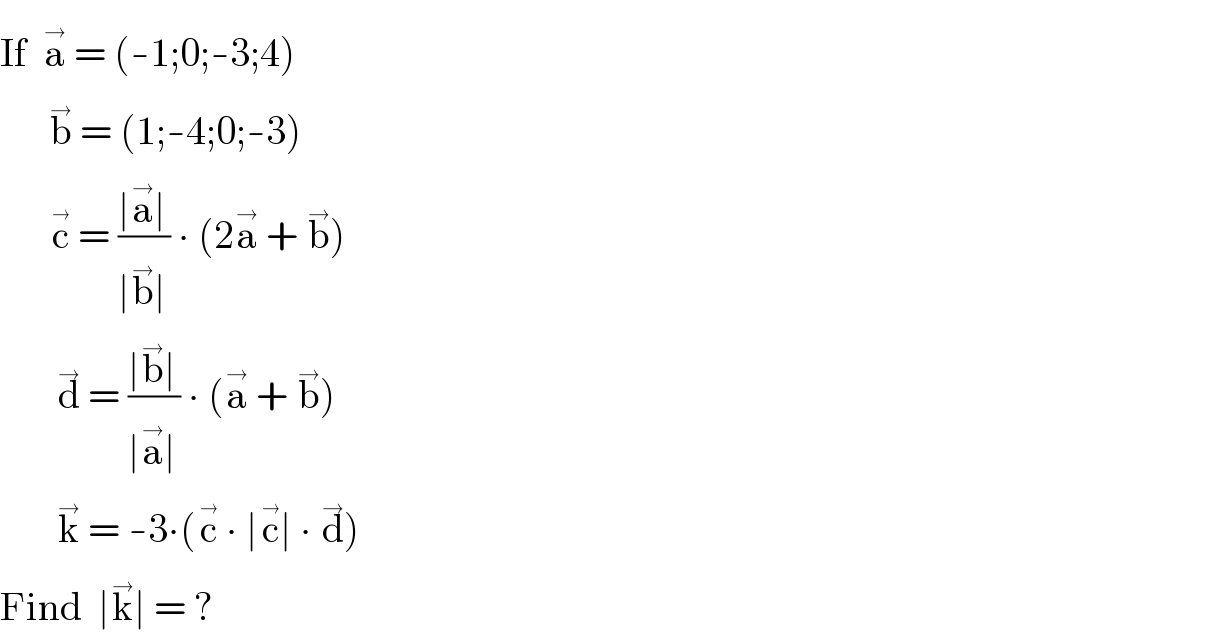
Question and Answers Forum
Question Number 154948 by mathdanisur last updated on 23/Sep/21

Commented by JDamian last updated on 23/Sep/21
how is defined the product of two vectors?
Commented by prakash jain last updated on 23/Sep/21

Commented by mathdanisur last updated on 23/Sep/21

